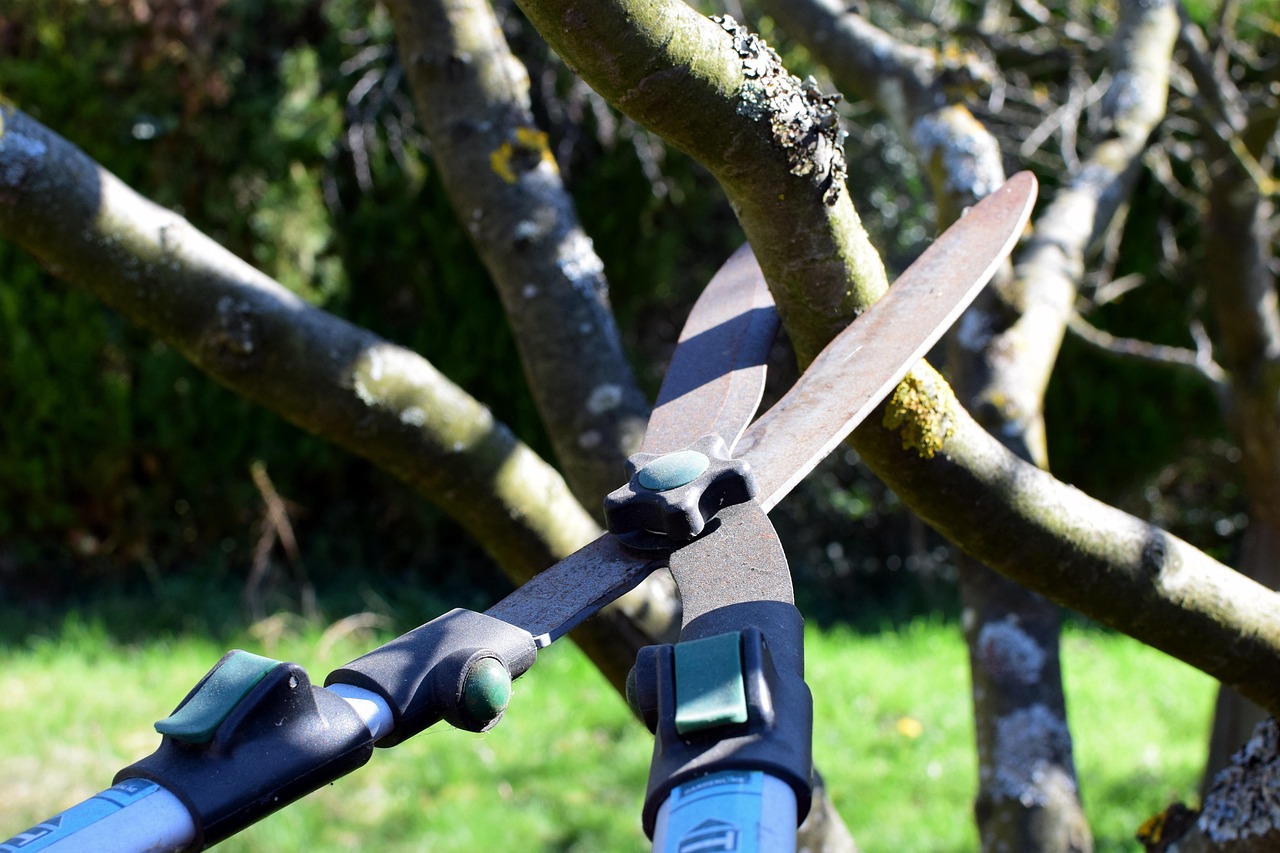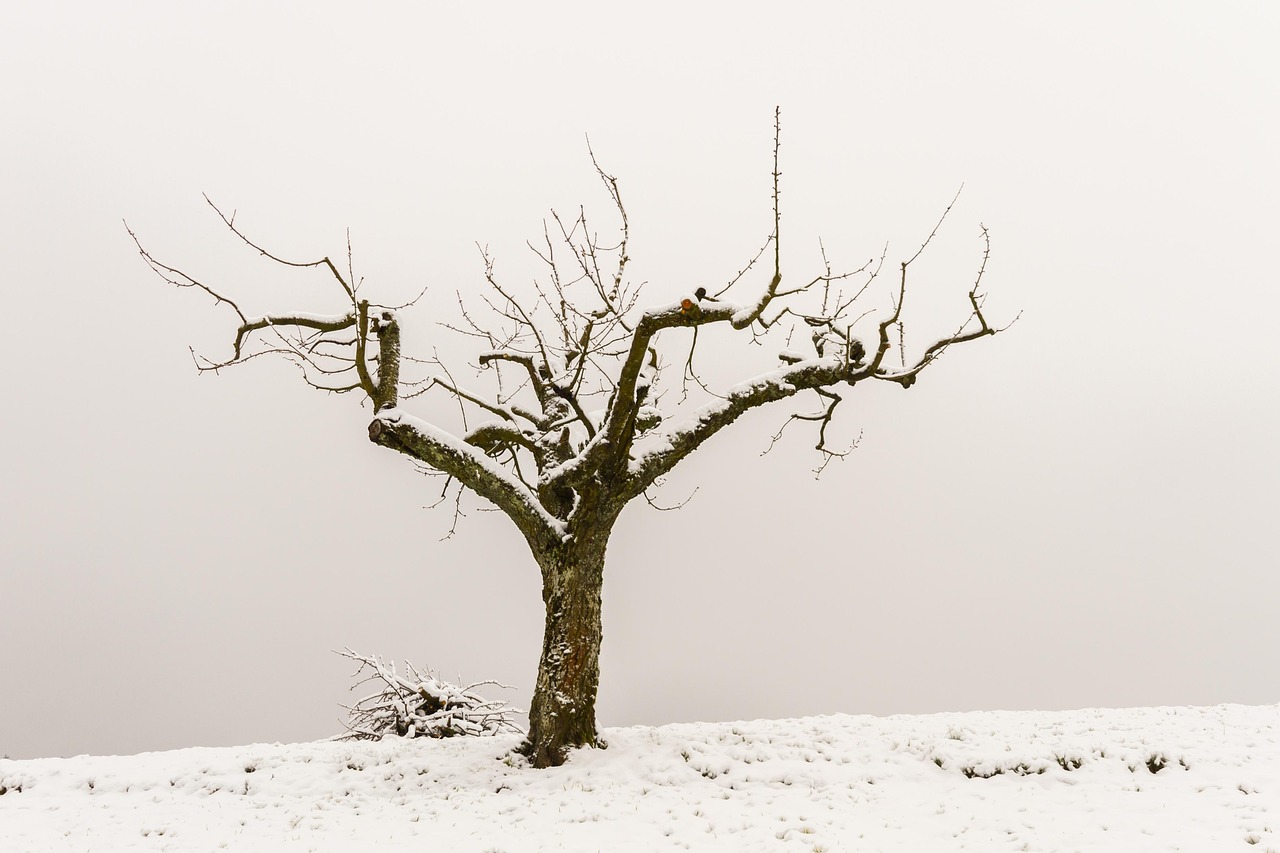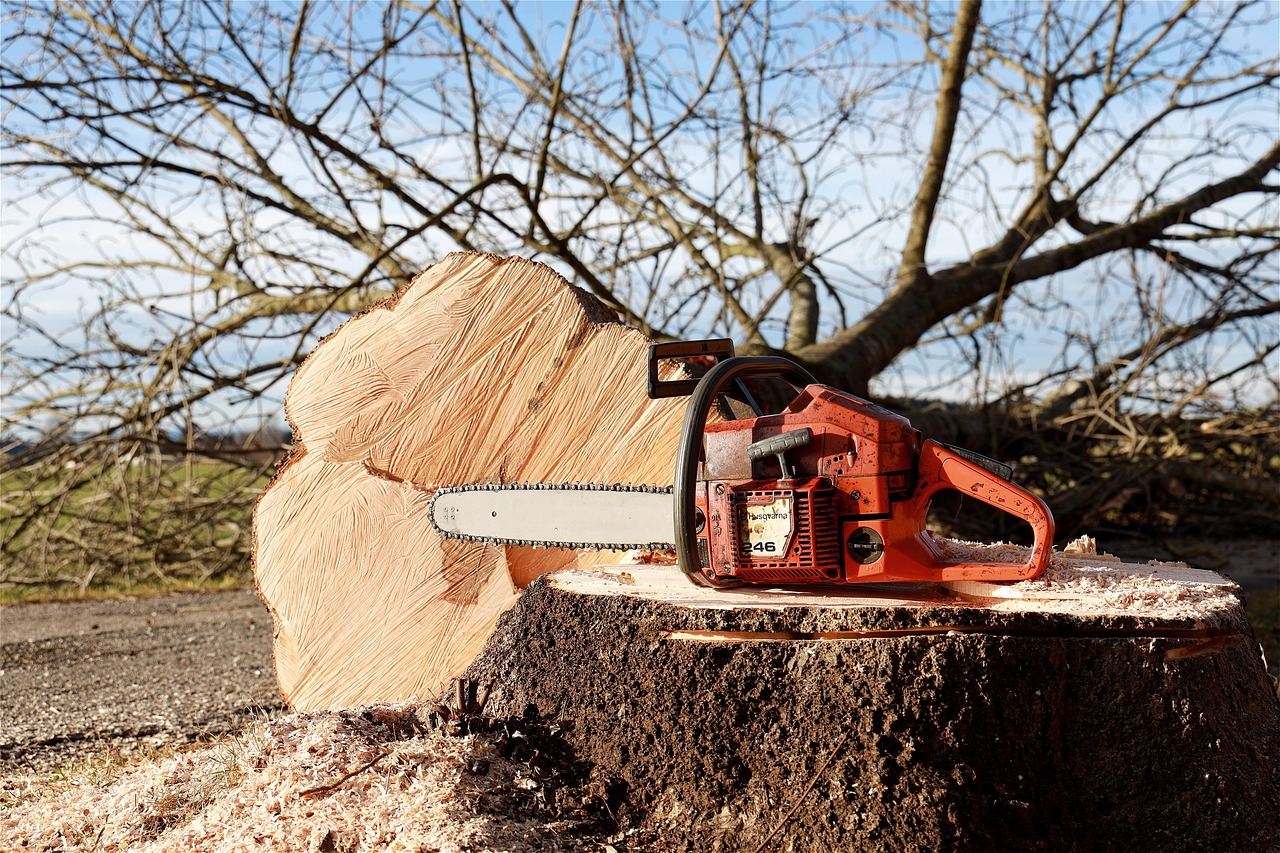Tree pruning is essential for minimizing future storm damage risks. Properly maintained trees are less likely to suffer from broken branches or uprooting during severe weather, ensuring safety and protecting property.
Storms can cause significant damage to trees and surrounding properties. High winds, heavy rain, and ice can lead to fallen branches or even entire trees coming down. This not only poses a risk to homes and vehicles but can also endanger lives. Therefore, proactive measures such as tree pruning become crucial in risk management.

Understanding the importance of tree pruning is the first step in safeguarding your property. Pruning encourages healthy growth and can help shape the tree for better stability. Furthermore, it allows for the removal of dead or weak branches that could become hazardous during storms.
The Importance of Tree Pruning
Tree pruning involves the selective removal of specific branches to improve the tree’s structure and health. This practice is beneficial for several reasons:
- Health Improvement: Removing diseased or damaged branches can improve the overall health of the tree.
- Structural Integrity: Proper pruning enhances the tree’s shape and structure, making it more resilient to wind and other forces.
- Increased Light and Airflow: Thinning out branches allows more sunlight and air to reach the inner parts of the tree, promoting healthy growth.
- Aesthetic Appeal: Well-pruned trees enhance the visual appeal of landscapes.
There are various techniques used in tree pruning, each serving a specific purpose. Knowing when and how to prune is essential for achieving optimal results.

Common Tree Pruning Techniques
The following table outlines some common tree pruning techniques, explaining their purposes and ideal timing:
| Pruning Technique | Purpose | Best Time to Prune |
|---|---|---|
| Crown Thinning | Reduces density of leaves and branches | Late winter or early spring |
| Crown Raising | Removes lower branches to increase clearance | Anytime, preferably in late winter |
| Crown Reduction | Reduces height and spread of the tree | Late winter or early spring |
| Deadwooding | Removal of dead or dying branches | Anytime, but ideally in late winter |
Each of these techniques contributes to a tree’s ability to withstand storms. For instance, crown thinning helps reduce wind resistance, while deadwooding eliminates potential hazards from unstable branches.
In addition to pruning techniques, understanding tree species also plays a critical role in effective storm preparedness. Different species have varying resilience levels against storm damage. Some trees are inherently weaker due to their structure or growth patterns.

Choosing the Right Trees for Your Landscape
When selecting trees for your landscape, consider species that are known for their strength and resilience. Some trees are better suited to withstand storms than others. Here are a few examples:
- Live Oak: Known for its strength and ability to withstand high winds.
- Pine Trees: Certain varieties have deep root systems that provide stability.
- Maple Trees: While beautiful, they require careful pruning to ensure safety during storms.
- Bald Cypress: Tolerates wet conditions and has a strong trunk.
Choosing the right species combined with proper pruning techniques can significantly enhance your landscape’s resilience against storm damage. Regular maintenance is key. Always consult with a professional arborist for guidance on proper pruning practices and tree selection tailored to your local climate.
Overall, investing time and effort into tree pruning not only protects your property but also contributes to the health of your trees. Healthy trees are more likely to thrive in challenging weather conditions, offering beauty and shade for years to come.

Understanding the Risks of Poorly Maintained Trees
While healthy trees enrich our landscapes, poorly maintained trees can pose significant risks, especially during storms. Dead or weak branches can break off and cause damage to property or injure people. Understanding the dangers associated with neglecting tree care is crucial for effective storm preparedness.
Many factors contribute to the vulnerability of trees during severe weather. These include:
- Weak Branch Structure: Trees with structural issues are more likely to fail under stress.
- Pests and Diseases: Infestations can weaken trees, making them more susceptible to breakage.
- Improper Pruning: Incorrect pruning can create weak points in the tree.
- Lack of Maintenance: Neglected trees may develop deadwood, increasing the risk of falling branches.
Signs of Tree Stress
Identifying signs of tree stress is essential for timely intervention. Here are some common indicators that a tree may need attention:
- Discolored Leaves: Yellowing or browning leaves can indicate nutrient deficiencies or disease.
- Excessive Leaf Drop: Trees that shed leaves earlier than usual may be stressed.
- Cavities or Cracks: Visible damage to the trunk can compromise structural integrity.
- Mushroom Growth: Fungal growth at the base may indicate rot or decay.
If you notice any of these signs, it is important to consult with an arborist. Early detection can save a tree and prevent future storm-related hazards.
The Role of Professional Arborists
Hiring a professional arborist is highly beneficial for tree health and safety. Arborists are trained to assess tree conditions, identify diseases, and recommend appropriate pruning techniques. Here are some key reasons to consider professional help:
- Expert Knowledge: Arborists understand tree biology and can diagnose issues accurately.
- Proper Equipment: Professionals have access to specialized tools for safe and efficient pruning.
- Risk Mitigation: They can identify potential hazards and provide solutions before problems escalate.
- Regulatory Compliance: Arborists are familiar with local regulations regarding tree maintenance.
Seasonal Considerations for Pruning
The timing of tree pruning is critical for maximizing benefits and minimizing risks. Seasonal changes affect trees’ growth cycles, making certain times more suitable for pruning. Here is a breakdown of when to prune various types of trees:
| Tree Type | Best Pruning Season | Reason |
|---|---|---|
| Deciduous Trees | Late Winter to Early Spring | Trees are dormant, reducing stress and promoting healthy growth. |
| Coniferous Trees | Late Spring to Early Summer | Pruning during this time encourages growth and helps shape the tree. |
| Flowering Trees | After Blooming | Pruning after flowering helps maintain flower production for the following season. |
Pruning during the right season not only supports healthy growth but also reduces the risk of storm damage by ensuring the tree is strong and resilient. Additionally, seasonal pruning can prevent the spread of diseases that might thrive in warm, moist conditions.
Tree Maintenance Practices Beyond Pruning
While pruning is essential, other maintenance practices also play a vital role in storm preparedness. Here are some important practices to consider:
- Regular Inspections: Conduct routine checks for signs of disease or structural issues.
- Irrigation Management: Ensure trees receive adequate water, especially during dry spells.
- Nutrient Application: Fertilize as needed to promote strong growth and enhance resilience.
- Pest Control: Implement measures to manage pests that could weaken trees.
Integrating these practices into your tree care routine will further enhance their resilience against storm damage. A well-maintained tree is not only less likely to fall during severe weather but also contributes positively to your landscape’s overall health.
The Benefits of Mulching
Mulching around the base of trees is another effective maintenance practice. It offers several benefits, including:
- Moisture Retention: Mulch helps retain soil moisture during dry periods.
- Weed Suppression: It prevents weeds from competing with trees for nutrients and water.
- Soil Temperature Regulation: Mulch moderates soil temperature fluctuations, supporting healthy root growth.
- Nutrient Enrichment: As mulch decomposes, it adds organic matter to the soil, improving fertility.
The right application of mulch not only supports tree health but also contributes to a more resilient landscape capable of withstanding the challenges posed by storms.
Emergency Preparedness for Trees
In addition to regular maintenance practices like pruning and mulching, having an emergency preparedness plan for trees is essential, especially in storm-prone areas. This plan should outline steps to take before, during, and after a storm to protect both your trees and your property.
Before the Storm
Taking proactive measures before a storm can significantly reduce damage. Here are some steps to consider:
- Tree Assessment: Inspect trees for any signs of weakness or disease. Look for dead branches or structural issues that could pose a risk during a storm.
- Pruning: Schedule professional pruning to remove any hazardous branches. This should be done well before storm season.
- Staking Young Trees: Consider staking young trees to provide additional support during high winds. Ensure that stakes are not too tight, as this can cause damage.
- Clear Surrounding Debris: Remove any loose items from the yard that could become projectiles in high winds.
During the Storm
When a storm is imminent, take immediate action to ensure safety:
- Stay Indoors: Avoid going outside to inspect trees during severe weather conditions.
- Monitor Trees: If safe to do so, observe tree behavior from a safe distance. Look for signs of movement or cracking.
- Secure Your Home: Close windows and doors, and ensure that outdoor furniture is secured or stored away.
After the Storm
Once the storm has passed, it is important to assess any damage and take appropriate action:
- Evaluate Tree Damage: Look for broken branches, uprooted trees, or signs of disease.
- Check for Hazards: Ensure that fallen branches do not pose a threat to people or property.
- Contact Professionals: If significant damage is present, contact a certified arborist for evaluation and clean-up.
The Role of Local Regulations
Understanding local regulations regarding tree maintenance and removal is essential for homeowners. Many municipalities have specific rules governing tree care, particularly in urban areas where trees are closely monitored. Here are some considerations:
- Permits for Pruning or Removal: Some areas require permits for significant tree work, especially if the tree is considered a protected species.
- Liability Issues: Homeowners may be held liable for damage caused by their trees if proper maintenance is not conducted.
- Community Programs: Many local governments offer tree assistance programs, including free assessments or educational workshops on tree care.
Selecting the Right Equipment for Pruning
Having the right tools is crucial for effective and safe tree pruning. Here are some commonly used tools along with their uses:
| Tool | Description | Best Use |
|---|---|---|
| Hand Pruners | A small tool with one sharp blade and an anvil. | Ideal for cutting small branches up to ¾ inch thick. |
| Loppers | A larger tool with long handles for added leverage. | Used for branches between ¾ inch and 2 inches thick. |
| Saws | A hand or powered saw used for larger branches. | Effective for branches thicker than 2 inches. |
| Pole Pruners | A tool with a long pole and pruner at the end. | Useful for reaching high branches without climbing. |
Using the right tools will ensure that cuts are clean and quick, reducing stress on the tree and minimizing potential damage. Safety gear, such as gloves and goggles, should also be worn during any pruning tasks to prevent injuries.
Understanding Tree Growth Patterns
A comprehensive understanding of tree growth patterns can enhance your ability to maintain trees effectively. Trees grow in specific ways that affect their structure and resilience. Key factors include:
- Crown Development: The shape and density of the crown influence how wind interacts with the tree. A well-balanced crown can help distribute wind forces evenly.
- Root Systems: The depth and spread of roots vary by species. Trees with shallow roots may need additional support during storms.
- Bark Health: Healthy bark protects trees from pests and diseases. It’s important to monitor for signs of damage or decay.
By understanding these growth patterns, you can make informed decisions about pruning and maintenance that promote overall tree health and stability against storm damage.
The Impact of Climate Change on Tree Resilience
As climate change continues to affect weather patterns, understanding its impact on tree resilience becomes increasingly important. Here are some effects to consider:
- Increased Storm Intensity: More severe storms can lead to greater tree damage if they are not properly maintained.
- Drought Stress: Prolonged dry periods can weaken trees, making them more susceptible to damage during storms.
- Pest Proliferation: Warmer temperatures may result in increased pest activity, which can harm tree health.
Awareness of these changes allows homeowners to adapt their tree care strategies accordingly. By taking proactive steps today, you can help ensure that your trees remain strong and resilient in the face of future challenges posed by climate change.
Adapting Tree Care Practices for Future Challenges
As we navigate the increasing challenges posed by climate change, it is crucial to adapt our tree care practices to foster resilience. This involves not only understanding the impact of environmental changes but also implementing strategies that enhance tree health and stability. Here are some essential strategies for adapting tree care in light of these challenges:
- Diverse Planting: Incorporating a variety of tree species can create a more resilient landscape. Biodiversity helps mitigate the risks associated with pests and diseases, as some species may be more resistant to specific threats.
- Soil Health: Maintaining healthy soil is vital for tree growth. Regularly testing soil and amending it with organic matter can improve nutrient availability and water retention, helping trees withstand drought conditions.
- Water Management: Implementing efficient irrigation systems can help ensure trees receive the right amount of water, particularly during dry spells. Drip irrigation is one effective method that conserves water while providing adequate moisture.
- Monitoring Weather Patterns: Keeping an eye on local weather forecasts and climate trends can inform when to conduct maintenance activities, such as pruning or watering.
By employing these adaptive strategies, homeowners can better equip their trees to handle the stresses of an evolving climate, ensuring both safety and longevity.
Investing in Tree Education and Community Awareness
Education plays a critical role in promoting effective tree care practices. Engaging with local communities about the importance of tree maintenance can lead to more informed decisions regarding landscaping and tree management. Here are some ways to foster education and awareness:
- Workshops and Seminars: Organize community events focused on tree care education, covering topics from proper pruning techniques to identifying signs of disease.
- Online Resources: Utilize digital platforms to share educational content about tree health, maintenance, and storm preparedness.
- Collaboration with Arborists: Partner with local arborists to provide professional insights and recommendations for community members.
- Promotion of Tree Planting Initiatives: Encourage community tree planting efforts, emphasizing the benefits of trees for urban environments and their role in mitigating climate change.
By improving community knowledge about trees, we can collectively enhance the health and resilience of our green spaces, leading to safer environments during storms.
Enhancing Local Ecosystems Through Tree Care
Trees do not only provide aesthetic value; they play a vital role in supporting local ecosystems. Healthy trees contribute to biodiversity, improve air quality, and help regulate local climates. Here are some benefits that well-maintained trees offer to their ecosystems:
- Habitat for Wildlife: Trees provide shelter and food for various species, including birds, insects, and mammals.
- Carbon Sequestration: Trees absorb carbon dioxide from the atmosphere, helping to mitigate the effects of climate change.
- Soil Stabilization: Roots anchor soil, reducing erosion and preventing sediment runoff into waterways.
- Improved Water Quality: Tree canopies help regulate rainfall, allowing water to infiltrate the ground rather than run off into storm drains.
By recognizing the interconnectedness of trees with their surrounding ecosystems, we can be motivated to invest time and resources into their care and maintenance.
Final Thoughts
Tree pruning and maintenance are essential practices that significantly contribute to minimizing future storm damage risks. By understanding the importance of proper pruning techniques, recognizing signs of stress in trees, and implementing proactive measures, homeowners can safeguard their properties and enhance the resilience of their landscapes.
The impact of climate change emphasizes the need for adaptive strategies in tree care. By diversifying plant selections, maintaining soil health, and fostering community education, we can better prepare our trees for the challenges ahead. The benefits of healthy trees extend beyond individual properties; they enhance local ecosystems, improve air quality, and provide critical habitats for wildlife.
Ultimately, investing in tree care is an investment in our environment and our communities. As we face changing climate conditions, taking steps today ensures that our trees will continue to thrive, providing beauty, shade, and safety for generations to come.
